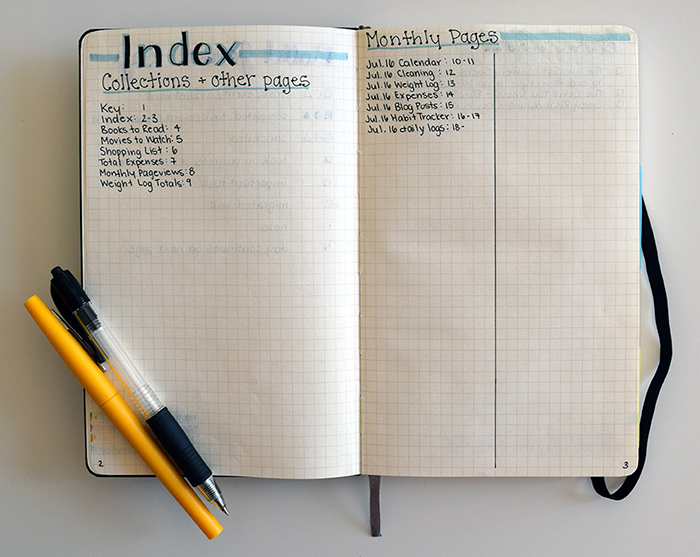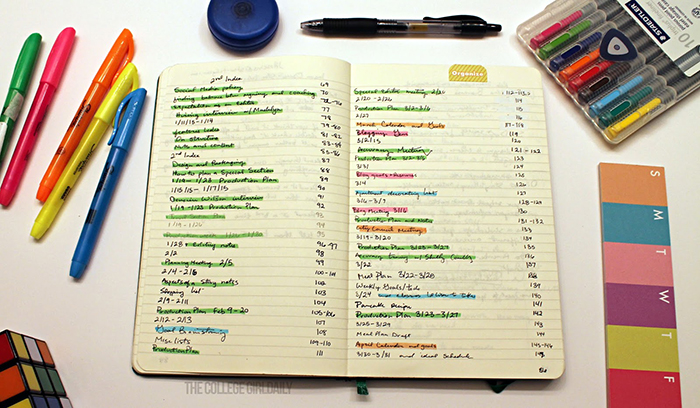6 Index Hacks for your Bullet Journal
The Index page is the core of your Bullet Journal. It's where you archive all your entries so that you can easily find them when needed. However, not many people talk about the Index page and I know a lot of people neglect to fill in the entries as they create their spreads in their notebook. Today I'll show you how to make your Index Page even more functional with a few Index hacks.
The Index page is the core of your Bullet Journal. It's where you archive all your entries so that you can easily find them when needed. However, not many people talk about the Index page and I know a lot of people neglect to fill in the entries as they create their spreads in their notebook. Today I'll show you how to make your Index Page even more functional with a few Index hacks.
Split it into two to maximise the space
Use a vertical line to split the index page into two sections. That way you can maximise and utilise better the space, especially if you have a very thorough Index page with lots of entries.
Original Bullet Journal Website
Separate Collections from Calendar pages
The way you've split the Index page into two section as shown above, you might want to use each section for different entries. Like Kalyn does with hers, where she separates it into Calendar pages and Collection pages.
Or you can choose to have a separate Index page for each category, like Katie does with her Index Page. As you can see, she has one page dedicated to all the collections she creates and the other page to write down all the monthly entries.
Make certain entries bolder
You can make the first entry of each month bolder, to indicate the change of the month and that way to visually separate the entries of each month. Kara does this by simply making her letters thicker:
Or you can use highlighters to mark each new month like Reagan:
Mark the most used pages for easier access
In your bullet journal, there are certain pages that you tend to refer to very often. So, you can mark those pages in order to be able to find them quicker. Like Rhianna does in her bullet journal:
Colour code each entry
You can use markers or highlighters to mark specific entries according to your colour coding system like Hannah-Beth has done:
Or you can add a coloured box in the beginning of each entry to categorise it according again to your colour coding system like Dawn:
You can even write each entry in different colour according to the category it belongs, like Paula does:
Use symbols to indicate different spreads
You can use different symbols (signifiers) before each spread to mark each category and differentiate them from each other. You can use as many different signifiers as you want, or you can keep it simple and use only one symbol to separate again the calendar from the collection pages as you can see below:
As you can see there are various ways that can help you make better use of the Index page. Do you use any of the above? Are you thorough with your Index page or do you usually neglect to fill it in?














